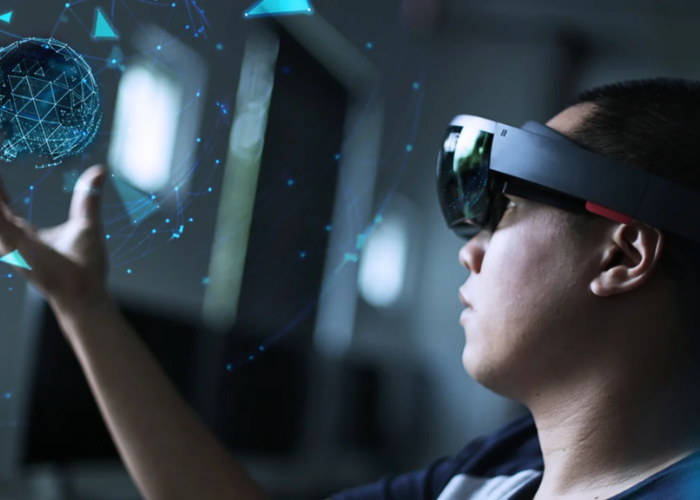In recent years, virtual and augmented reality (VR/AR) technology has been rapidly advancing and transforming the way we interact with the world. From immersive gaming experiences to remote collaboration tools, VR/AR technology is quickly becoming an integral part of our digital lives. It’s no surprise, then, that virtual and augmented reality technology is one of today’s hottest topics. We’ll explore the latest trends in virtual and augmented reality technology and consider the impact of this technology on our lives in the future.
What is Virtual and Augmented Reality Technology?
Virtual reality (VR) is a computer-generated 3D environment that users can explore and interact with. The user wears a headset that blocks out the outside world and immerses them in the virtual environment. In contrast, augmented reality (AR) is a type of technology that overlays digital elements in the real world. For example, a user might be able to view a 3D map of their surroundings with their smartphone or tablet.
What Are the Current Trends and Developments in VR and AR?
One of the most exciting current trends in VR/AR technology is the development of immersive gaming experiences. Companies like Sony, Microsoft, and Valve are releasing powerful gaming platforms that allow users to explore and interact with virtual worlds. Meanwhile, virtual reality headsets like the Oculus Rift and HTC Vive are becoming increasingly affordable and accessible, making it easier for users to experience virtual reality in the comfort of their own homes.
In addition to gaming, virtual reality technology is being used for a variety of other applications. For example, VR technology is being used for remote collaboration, medical training, and virtual tourism. Augmented reality technology is also being used in exciting ways, such as with the popular mobile game Pokemon Go.
What Impact Will VR and AR Have on the Future?
The impact of VR and AR technology on our lives in the future is difficult to predict, but one thing is certain: VR and AR technology will continue to transform the way we interact with the world. VR and AR technology can be used to create immersive, interactive experiences that defy the boundaries of physical reality. In the future, we may be able to use VR and AR technology to explore distant planets, travel to the past, and even visit virtual versions of our friends and family.
VR and AR technology also has a wide range of potential applications. For example, VR and AR technology can be used to create virtual classrooms, virtual conferences, and virtual shopping experiences. VR and AR technology can also be used for medical training, remote collaboration, and even for training military personnel.
Challenges to Adopting VR and AR Technology
Despite the potential of VR and AR technology, there are still several challenges that need to be addressed before widespread adoption can occur. First, developing effective VR/AR technology requires a significant amount of time and resources. In addition, creating engaging and immersive experiences can be difficult and costly. Another challenge is creating technology that is accessible and affordable for the general public. Finally, there are still safety concerns that need to be addressed, such as ensuring that users don’t become disoriented or overwhelmed while using VR/AR technology.
Conclusion
Virtual and augmented reality technology is quickly becoming an integral part of our digital lives. From immersive gaming experiences to remote collaboration tools, VR/AR technology is transforming the way we interact with the world. We’ve explored the latest trends in VR/AR technology and considered the potential impact that this technology could have on our lives in the future. While there are still several challenges that need to be addressed before widespread adoption can occur, it’s clear that VR and AR technology will continue to shape our lives for years to come.






